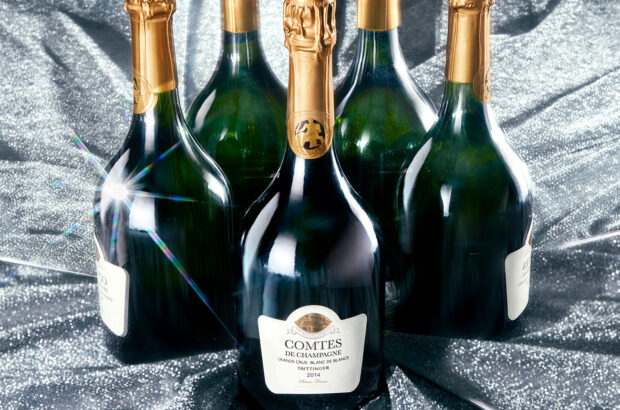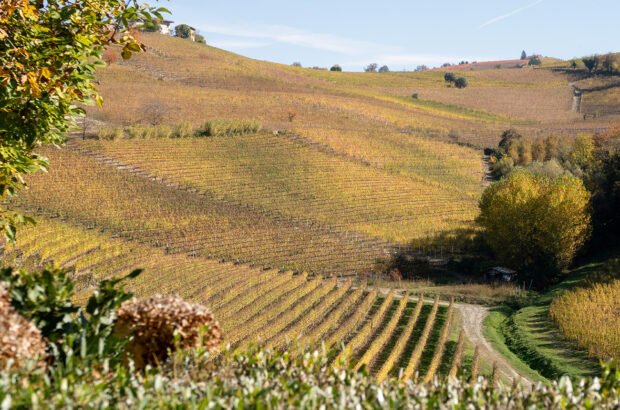The Pinot Gris
- For lack of a better word, the obsession is the search for that most elusive quality, terroir
- ‘If you go back to the beginning of why we’re in Oregon, it’s easy to understand the appeal of Pinot Gris.’
- Pinot Gris accounts for more than an eighth of Oregon’s total harvest and almost a third of its white wine production.
- Gris has a richness without a fatness; a concentration of flavour without wearing you out in your mid-palate.
It’s barely three decades since the first commercial releases of Vitis vinifera wines were made in Oregon. Thirty or so vintages seem hardly adequate to sort out the infinite vagaries of grape, place, weather and clime, including Pinot Gris; yet astonishing progress has been made in this blink of an oenological eye.
Quest for Flavour
What drives winemakers here – the organising principle behind all their decision-making – is the pursuit of flavour. For lack of a better word, their obsession is the search for that most elusive quality, terroir. Oregon’s winemakers want to create unique and particular flavours in their wines, and they believe they can do it by planting the right grape in the right place, and then vinifying it in the right way. At the moment, many of them have come to believe that the right white wine grape for Oregon, the one that will best display the region’s distinctive terroir, is Pinot Gris.
‘I brought Pinot Gris up to Oregon with me in 1964,’ recalls Eyrie Vineyards’ David Lett, ‘160 cuttings taken from the only four vines they had at UC Davis’. Why? ‘Because they fit the theory of planting early-ripening varieties in the Willamette Valley. Oregon had the cool growing season; the idea was to adapt the grapes to the climate,’ he says, exasperation creeping into his voice, ‘which they still haven’t figured out in places like Santa Barbara’.
Evolution of Pinot Gris
Many of Oregon’s pioneers moved north from California in the late 1960s and early 1970s, and they weren’t, in the words of one, ‘just looking for California vineyard land at fire-sale prices’. Initially, they were looking for a place to grow Pinot Noir. They found it in the Willamette Valley, planting their vines on west-facing slopes, at moderate altitudes, where they were buffered from the harsh Pacific storms by a range of low, coastal hills, and from the searing heat of eastern Oregon by the Cascade Mountains.
Other cool climate grapes naturally followed: Riesling, Gewürztraminer and Pinot Gris. Though Pinot Noir grabbed the spotlight, it was white wines that built the industry in Oregon during the early years. They ripened reliably, required no expensive oak ageing, and were quick to reach the market, generally in the spring of the year following harvest. Nonetheless, Pinot Gris took a long time to catch on. Lett’s 1970 Eyrie was the first commercial Pinot Gris made in America, but for the next decade it remained sui generis; an oddity, an obsession, fuelled by his stubborn commitment to growing cool-climate grapes in a cool-climate region. Never one to mince words, Lett believes fervently that California (or Baja Oregon as he likes to call it) is the wrong place to grow either Pinot Noir or Pinot Gris.
‘The important thing is that the grape grows in the right climate to begin with,’ he admonishes a visitor with evangelical zeal. ‘If you look in Italy, where do they have Pinot Gris planted? In the north, in mountains, at elevations where you’re getting a cool climate. Look at the natural vegetation of an area. If you go to Burgundy you could be standing in the Dundee hills of Oregon. You’ve got blackberries, no palm trees!’ Dick Ponzi, who made his first Gris in 1981, agrees. ‘If you go back to the beginning of why we’re in Oregon, it’s easy to understand the appeal of Pinot Gris. It’s a cool climate that brought us to Oregon in the first place, primarily for Pinot Noir. If you then look to the cooler regions of Europe, it becomes easy to work with some of these lesser known grapes, knowing that someone else has proven it for you.’
Viewed from afar, the emergence of Oregon Pinot Gris as the state’s white grape hope seems dramatic and sudden. In fact, it is neither. Rather, it is another case of an ‘overnight success’ that incubated for decades. Ten years after that first landmark vintage, Eyrie’s Pinot Gris production had reached just 25 cases annually. Ten years after that, there were still only 42 hectares harvested in the entire state, and 85 planted. But in the past decade that number has climbed to 574ha. Similarly, tonnes crushed have grown from 148 to 1,731, and cases sold have zoomed from 7,139 (1989) to 118,994 (1998).
Today, Pinot Gris accounts for more than an eighth of Oregon’s total harvest and almost a third of its white wine production, and those numbers continue to climb. At Cooper Mountain Vineyards, on the southwest slope of an ancient volcanic hill near the Portland community of Beaverton, Dr Bob Gross explains how he came to plant his first Pinot Gris back in 1980. ‘A neighbour happened to know Hubert Trimbach, and brought him by for a visit.’ Gross poured a glass of someone else’s Pinot Gris for his Alsatian guest. ‘Hubert thought it was terrible,’ he recalls with a chuckle. ‘Back then the style was to put it through full malolactic and age it in wood. He said: “There’s wood in it. They’ve just ruined it. That’s not the way we make it!”‘ Trimbach then opened a bottle of his own wine. It was so distinctive that Gross decided right then and there to try growing it himself.
Rich Cushman, Winemaker
Winemaker Rich Cushman has been making Cooper Mountain Pinot Gris for the past decade. He favours fermenting in stainless steel, with only minimum malolactic as needed. ‘I think in the early days people made Pinot Gris in the Chardonnay style. But it’s just not that well suited to it. I think the optimum ripeness for Pinot Gris is in the 22 to 22.5 brix range. I don’t care for it with a lot of alcohol. Any more than that makes for fat, ripe wines. We’ve also moved to whole-cluster pressing, from 1997. It makes the wines much more elegant. I leave them on the lees as long as I can, for more texture and interesting aroma. I’ve seen Pinot Gris from all over the state,’ Cushman concludes happily, ‘and this particular site is very special’.
Experimental wines
The evidence is in the bottle. Oregon’s best examples of Pinot Gris go beyond simple fruit flavours and layer in subtle spice and mineral notes. They clearly benefit from cooler sites such as Cooper Mountain. ‘What we’re sitting on,’ Gross proudly explains, ‘is the second oldest volcano in Oregon. The soils here are ancient and very compacted. We average four feet of soil, and then rock, all volcanic. This creates unique terroir.’ Current releases from Cooper Mountain include a 1998 Estate Bottled wine which is its first, fully certified organic vintage. Its soft textures are underscored by mineral accents and some bracing citrus, pears and cinnamon. The 1998 Estate Reserve is an even bigger wine, full-bodied, luscious, round and smooth, laden with fruit. It finishes with a seductive splash of vanilla.
David Adelsheim is another of Oregon’s Pinot pioneers. Like the others, he is continuing his experiments to improve upon his past successes. He feels that Pinot Gris is still a grape variety that people really don’t have a lot of understanding about. ‘People don’t know what it’s supposed to taste like,’ he explains. ‘The models of good Pinot Gris range from Collio to Alsace to Oregon, but all three are totally different. That they would come from the same grape variety is happenstance.’
The point Adelsheim wants to make is that Alsace, although it is frequently cited as the model for Oregon Pinot Gris, is actually quite different. ‘I think that Alsace is a unique climate and sort of the exact opposite of Oregon,’ he says in his quiet way. ‘In Alsace, summers are reasonably warm, but wet; then it gets dry in the fall. So, they can do these late harvests, get the botrytis, long hang-time, probably have a lot of fog. Here we have the exact opposite issue: we have these dry summers that get increasingly wet in the fall. This is not the place for late-harvest, residual sugar, botrytised wines, at least on a regular basis. I think that the style that we’ve sought out is probably closer to Collio. At their best, the Collio Pinot Gris can knock your head off with fruit, which is certainly the style that we would love to get.’
Variations in winemaking techniques
There are about four dozen different versions of Oregon Pinot Gris in current release, and although they are moving closer to a definitive regional style, variations in winemaking techniques and the endlessly surprising Oregon weather make for a lot of different flavours among them. Conversations with a dozen different winemakers yielded a variety of thoughts on the ideal flavours for the grape.
Rob Stuart from Erath Vineyards says: ‘I want tropical, but not heavy: mango, spring flowers like violets, hyacinth aromas. The smell, but not taste, of guava. Not pineapple, but maybe fresh pear and fresh apple. I sometimes equate pear with oxidation flavours. What I like about Gris is it has a richness without a fatness; a concentration of flavour without wearing you out in your mid-palate. It’s juicy, but we leave plenty of acidity. You get the flavours, and then this acidity comes along and cleans it off and refreshes you. It leaves me with an uplifted feeling.’
‘I look for a citrus component; more orange rind than grapefruit,’ said Cushman. ‘I look for pears, Asian pears more than apple, some melon, and a light spiciness that comes with Gris, more cinnamon. In the palate I look for great balance; no rough edges, and flavours as true to the aroma as they can be. I don’t want any bitterness in the finish, which can come from high alcohol.’
Lett shys away from the tropical fruit characters: ‘When I stick my nose into a tank it smells like there’s been apple cider in there. Tropical fruit I think is a symptom of overripeness; you tend to lose varietal characteristic when you get into the tropical zones of these things. In Pinot Noir I’m after the berries, in Pinot Gris I’m after the apples. But truly what I’m after is Pinot Noir and Pinot Gris.’ Clearly, Pinot Gris has caught the attention of consumers as well as winemakers. Food-friendly whites that are not Chardonnay have acquired an against-the-mould cachet among younger wine drinkers. Trendy may-be, but it’s a trend that seems likely to persist, thanks to a happy confluence of increased production, improved winemaking and the grape’s natural flair for accompanying food.
Tasting the wines
Over dinner at Portland’s quietly chic Wildwood Restaurant we tasted three vintages of Pinot Gris from Chehalem, Oak Knoll and Westrey wineries while the winemakers compared notes. Horizontal flights of their 1996, 1997 and 1998 bottlings showcased both the delicious depths of which Oregon Pinot Gris is capable, and the intriguing range of styles being produced by the top wineries. The Oak Knolls were stunning, seductive wines, with mouth-pleasing textures and a wonderful mix of fruit flavours: pears, melon, kiwi and citrus. The Westrey wines brought some sweet spices to the table: clove, nutmeg and cinnamon, the fruit running more to mango and pineapple. The Chehalem Reserve touched a completely different chord; leesy and austere, its bone-dry, flinty style finished with a hint of tobacco, and set up the food beautifully. As a group, the 1996s were holding up but ready to drink, the 1997s were precisely perfect, and the 1998s precocious, fruity and charming. All of them, without exception, were glorious with food.
Paul Gregutt’s top 12 Pinot Gris
1998 Elk Cove Vineyards Willamette Valley
The nose jumps out of the glass, promising lots of fruit: pears, apples, grapefruit and spice. Balanced and refreshing, it makes you reach quickly for that second taste.
1998 Silvan Ridge Oregon
A beguiling blend of flavours including mineral, lime, tangerine, orange peel and some Asian spice accents. Elegant, with a great finish.
1998 Cooper Mountain Estate Reserve
Wonderfully full bodied, forward and delicious. This luscious, round, smooth wine is laden with fruit and finishes with a seductive splash of vanilla.
1998 Airlie Willamette Valley
A gem, subtly showcasing orange peel, citrus and spice, with a little anise in the finish. Especially good value, with a nice edge to it.
1998 Ponzi Willamette Valley
An excellent vintage for Ponzi, the immaculate fruit showing full and bright. A splendid wine to drink young.
1998 Bethel Heights Willamette Valley
Effusive nose of pears, spice, tea and just a sniff of honey. Clean, crisp, full bodied and bracing, it crescendos in a long, slightly honeyed finish.
1998 Oak Knoll Willamette Valley
Friendly, forward fruit, mostly pears, melon and kiwi. Seductive now, but it should continue to improve over the next couple of years.
1998 Seven Hills Coleman Vineyard
A flavourful, fruity style, with good balance. The fruit stresses melon and white peaches, with a hint of honey to finish.
1998 Erath Willamette Valley
Bracing, complex fruits; apples, citrus and pears. The wine gathers strength in the back palate and finishes in a big, bold, juicy burst of flavour. Exceptional value.
1998 Eyrie
Consistently shows a lovely anise/fennel note in its Pinot Gris and the lean, tight styling makes it Oregon’s most ageworthy example. The current release shows pears and melon, with a lick of liquorice on the finish.
1998 Westrey
Spicy, with pineapple dominating a tart, citric finish.
1998 Chehalem Estate
Bottled Crisp, clean and straightforward, in a different style from the barrel-aged reserve; delicious, fruity.
1998 Adelsheim
Unusually dry, nutty style, green apples dominate. Concentrated but tastes older than expected. Experimental irrigation introduced in 1999 in the hope it will make for longer-lived wines.












